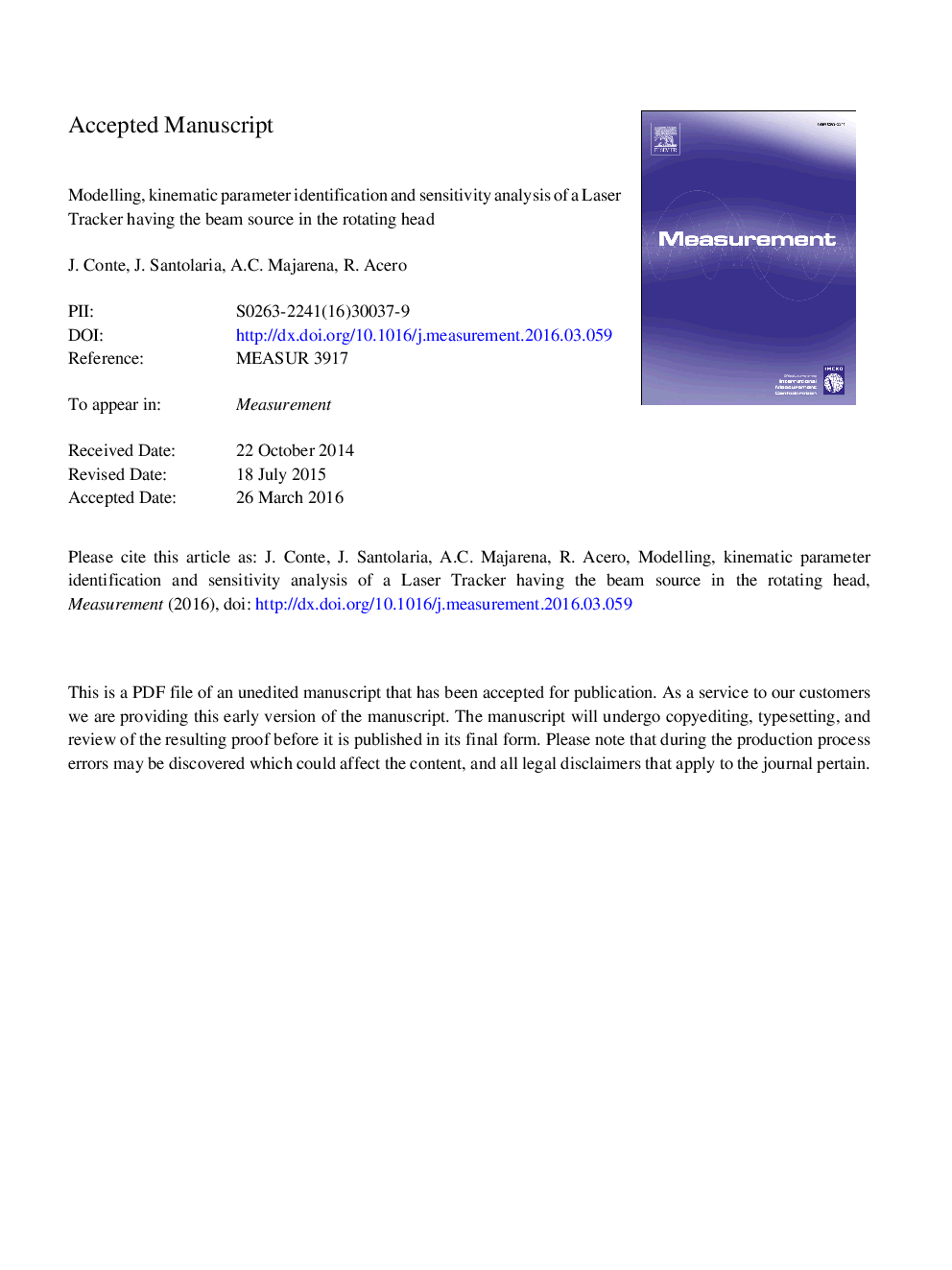| Article ID | Journal | Published Year | Pages | File Type |
|---|---|---|---|---|
| 7123745 | Measurement | 2016 | 26 Pages |
Abstract
This paper presents a new kinematic model, a parameter identification procedure and a sensitivity analysis of a laser tracker having the beam source in the rotating head. This model obtains the kinematic parameters by the coordinate transformation between successive reference systems following the Denavit-Hartenberg method. One of the disadvantages of laser tracker systems is that the end-user cannot know when the laser tracker is working in a suitable way or when it needs an error correction. The ASME B89.4.19 Standard provides some ranging tests to evaluate the laser tracker performance but these tests take a lot of time and require specialized equipment. Another problem is that the end-user cannot apply the manufacturer's model because he cannot measure physical errors. In this paper, first the laser tracker kinematic model has been developed and validated with a generator of synthetic measurements using different meshes with synthetic reflector coordinates and known error parameters. Second, the laser tracker has been calibrated with experimental data using the measurements obtained by a coordinate measuring machine as nominal values for different strategies, increasing considerably the laser tracker accuracy. Finally, a sensitivity analysis of the length measurement system tests is presented to recommend the more suitable positions to perform the calibration procedure.
Related Topics
Physical Sciences and Engineering
Engineering
Control and Systems Engineering
Authors
J. Conte, J. Santolaria, A.C. Majarena, R. Acero,
